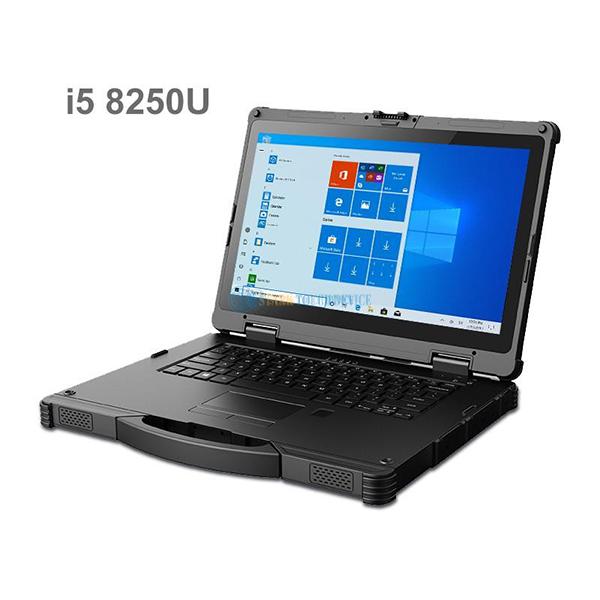Welcome STARK TOUCH DEVICE!
Solutions
Operation and debugging skills for machine vision software on industrial control computers
Debugging Techniques for Machine Vision Software on Industrial Control Computers
Industrial control computers (ICCs) paired with machine vision software form the backbone of automated quality inspection, robotic guidance, and process monitoring. However, achieving optimal performance requires systematic debugging strategies to address hardware compatibility, software configuration, and environmental interference. Below are practical techniques to streamline debugging processes and enhance system reliability.

Image Acquisition Optimization
1. Camera Parameter Calibration
Begin by validating camera settings to ensure image clarity. Adjust exposure time dynamically—shorter durations (1–50ms) are ideal for high-speed production lines to prevent motion blur, while longer exposures may be necessary in low-light environments. For example, in glass defect detection, increasing exposure to 200,000μs can reveal subtle scratches, but overexposure risks pixel saturation.
2. Trigger Mode Synchronization
Match the camera’s trigger mode to the production rhythm. Use external triggers (e.g., PLC signals) for synchronized image capture in conveyor systems, avoiding missed frames or double exposures. Internal triggers are suitable for static inspections but may introduce latency in dynamic scenarios.
3. Lighting Angle Adjustment
Optimize lighting geometry to maximize defect contrast. Rotate the light source to eliminate reflections on glossy surfaces—a 30° angle often reduces specular highlights on metal parts. For transparent objects like plastic bottles, diffuse dome lighting minimizes shadows, ensuring consistent edge detection.
Software Configuration and Error Handling
1. Real-Time Performance Monitoring
Leverage built-in tools to track processing time per module. For instance, if a pattern-matching algorithm exceeds 50ms, consider simplifying the template or reducing the search region. Memory leaks can be identified by monitoring RAM usage during prolonged runs; a steady increase indicates inefficient buffer management.
2. Error Message Parsing
Capture and analyze error codes generated during runtime. A “H_MSG_FALSE” return from a read_image function may point to a disconnected camera or corrupted file path. Use diagnostic logs to trace the sequence of operations leading to the failure, enabling targeted fixes.
3. Debugging Workflows
Implement step-by-step execution with breakpoints to isolate issues. For example, pause the workflow after preprocessing to verify if noise reduction (e.g., Gaussian blur with σ=1.2) effectively cleans the image. Inspect intermediate results, such as binary masks after thresholding, to ensure alignment with expected outcomes.
Environmental and Hardware Diagnostics
1. Thermal and Vibration Management
Monitor ICC temperature to prevent thermal throttling. Dust accumulation on heatsinks can elevate CPU temperatures by 10–15°C, reducing processing speed. Use compressed air to clean vents monthly. Additionally, secure cameras and lights with anti-vibration mounts to avoid image blurring in high-vibration environments like stamping presses.
2. Power Quality Assessment
Fluctuations in input voltage (beyond ±10%) can cause system crashes. Deploy a multimeter to check voltage stability at the power distribution unit (PDU). For mission-critical systems, install uninterruptible power supplies (UPS) to mitigate surges or outages.
3. Hardware Compatibility Checks
Verify that the ICC’s specifications meet software requirements. Older systems with 4GB RAM may struggle with deep learning-based vision tools, necessitating upgrades to 16GB or more. Ensure PCIe slots support high-speed data transfer (e.g., Gen4 x8) for multi-camera setups.
Algorithm and Data Validation
1. Template Training Refinement
When using pattern matching, train templates with diverse samples to account for variations in lighting, orientation, and scale. For instance, include rotated and scaled versions of a product logo to improve robustness. Validate training results by testing on unseen datasets to measure false-positive rates.
2. Multi-Sensor Data Fusion
Combine inputs from RGB cameras, 3D lasers, or infrared sensors to enhance accuracy. For example, in automotive part inspection, fuse 2D edge data with 3D point clouds to detect both surface defects and dimensional errors. Calibrate sensors spatially to ensure alignment within ±0.1mm.
3. Logging and Replay Mechanisms
Implement detailed logging of processing parameters, such as filter kernels or detection thresholds. Use replay tools to rerun specific workflows with saved images, enabling rapid iteration during troubleshooting. For chronic issues, archive logs for long-term trend analysis.
By integrating these techniques, engineers can systematically debug machine vision systems on industrial control computers, reducing downtime and improving inspection accuracy. Focus on iterative testing, environmental control, and data-driven adjustments to maintain peak performance.


